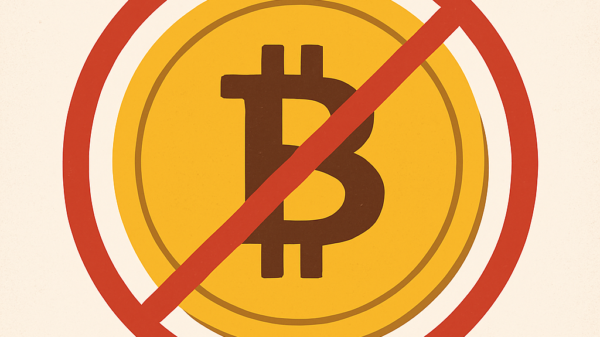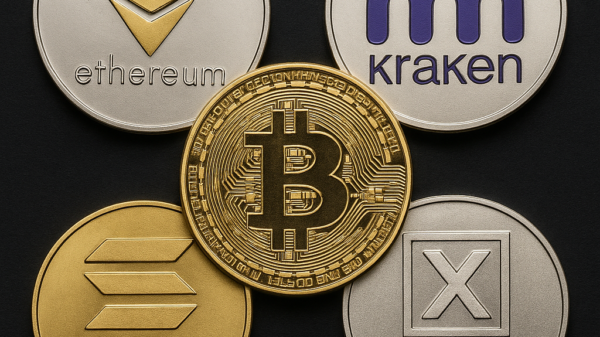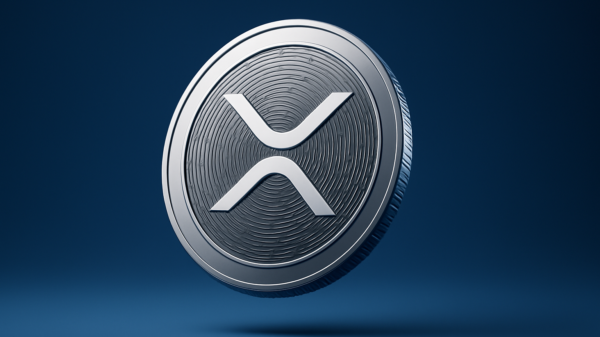But what does that mean for the coin, the industry and the investor?
The Bitcoin halving happens approximately every four years where the reward for mining new blocks is cut in half. This means miners receive 50 per cent less bitcoins for verifying transactions. This event is a core part of Bitcoin’s economic model, embedded into its code by Bitcoin’s anonymous creator, Satoshi Nakamoto, to ensure that its total supply reaches a maximum of 21 million coins.
Nakamoto designed the process to mimic that of extracting precious resources from the earth. The idea is that they become harder and less rewarding to mine over time. As such, the halving decreases the bitcoin generation and introduction rate, preventing inflation. It also gradually decreases supply over time until all bitcoins are mined.
Additionally, the Bitcoin halving event has traditionally had an outsized effect in shaping the supply and demand dynamics within the cryptocurrency market, largely through the principles of scarcity and market sentiment.
This subsequent reduction in supply growth can lead to immediate implications for miners, as their rewards for verifying transactions are halved, potentially reducing mining activity if the price of Bitcoin doesn’t adequately compensate for the lower rewards. This situation could lead to a slower introduction of new supply until mining difficulty adjusts to the new equilibrium.
Read more: Jury gives Sam Bankman-Fried 25 year sentence for FTX scam
Read more: Crypto mining pollution lawsuit targets Pennsylvania company
Halvings highlight Bitcoin’s scarcity and deflationary nature
On the demand side, halvings typically spark increased public interest and media coverage, drawing new investors to Bitcoin and boosting demand. The event’s anticipation, coupled with expectations of a supply squeeze and potential for price appreciation, encourages both new and existing investors to buy or hold onto their Bitcoin.
It’s the prospects of riches galore that draw speculators to the coin, especially around the halving. They’re drawn by the promise of future price increases and ultimately leave with profits, providing contributions to price volatility. These result in Bitcoin’s historical price surges in the period following a halving, driven by this tightened supply and growing demand.
However, while halvings highlight Bitcoin’s scarcity and deflationary nature—bolstering its appeal as “digital gold”—the actual market impact of these events is also contingent on broader economic factors, regulatory changes, and developments within the crypto space, making the outcome of each halving somewhat unpredictable.
The price of Bitcoin has exhibited some curious trends around the times of each previous halving, influenced by a combination of anticipation, speculation, and the intrinsic change in supply and demand dynamics these events introduce.
Read more: Netcoins USA new deal with Zero Hash expands crypto reach into United States
Read more: The SEC denies Coinbase petition for rules clarification
The first Bitcoin halving in November 2012 set the precedent, with a gradual price increase leading up to the event as the market began to account for the upcoming reduction in new Bitcoin supply. The price soared from around USD$12 at the time of the halving to approximately USD$1,150 by November 2013 on headwinds made of demand and speculative interest.
This pattern of pre-halving appreciation, subdued immediate reaction, and post-halving bullish momentum continued with the second halving in July 2016. Before this halving, Bitcoin’s price steadily climbed from about USD$430 in January 2016 to around USD$660 by the halving in July.
The months that followed saw a continuation of this bullish trend, culminating in a near USD$20,000 peak in December 2017, setting off a major bull run that underscored Bitcoin’s growing acceptance and speculative appeal.
The third halving in May 2020 followed a similar trajectory, with the price recovering from a significant dip in March 2020 due to the COVID-19 market crash, to about USD$8,000 by the time of the halving.
While the halving event itself did not precipitate immediate dramatic price movements, staying in the USD$8,000 to USD$10,000 range shortly after, the subsequent months witnessed a gradual but substantial price increase. This period led to a historic bull run, with Bitcoin’s price peaking over USD$64,000 in April 2021.
A combination of increased interest, broader acceptance and adoption of Bitcoin as a viable asset class, and concerns among investors have fuelled the rally.

Bitcoin’s three year trajectory. Image via Coingecko.
Read more: SEC Chair Gensler warns AI left unchecked could initiate financial disaster
Read more: Vitalik Buterin proposes hard fork strategy for Ethereum in case of quantum attack
Bitcoin miners have been preparing for a long time
It is anticipated to have significant impacts on the Bitcoin ecosystem, including the mining community, the cryptocurrency’s price, and its perceived scarcity.
For example, the halving can lead to reduced profitability for miners unless compensated by an increase in the price of Bitcoin or improvements in mining efficiency.
Most Bitcoin mining companies have been preparing for the halving for the better part of a year. They typically seek to improve outcomes through increasing their hashrates—or the efficiency of their operation in terms of Bitcoin mined. Otherwise, they also seek to reducing their overhead by either smoothing out the wrinkles in their electrical costs by either getting the best equipment, or finding ways to cut down on environmental issues like taking on immersion cooling.
Marathon Digital Holdings, Inc. (NASDAQ: MARA) closed its acquisition of a Bitcoin mining data center in Garden City, Texas, adding an extra 200 megawatts to its total mining capacity.
“With the closing of this acquisition, we have gained more influence over our operations, an opportunity to reduce our cost per coin at this site, and an additional 100 megawatts of capacity in which to expand,” said Fred Thiel, Marathon’s chairman and CEO.
“Following the anticipated expansion of this site later in the year, our Bitcoin mining portfolio will consist of 1.1 gigawatts of capacity, 54 per cent of which we will directly own and operate, and all of which are diversified across eleven sites on three continents. “
Read more: Will Securities and Exchange Commission attempt to classify Ethereum as a security?
Read more: Cornell University study proposes pairing cryptocurrency mining with green hydrogen production
Companies are slashing costs and ramping up for the halving
These orders and options for machines add an extra 45 exahash of capacity, according to Thiel. The acquisition of the company’s third Bitcoin mining facility is now complete, and Thiel believes the company now has a clear path to its overall growth targets of 35 to 37 exahash this year with a goal of 50 exahash next year.
Meanwhile, Bitcoin mining giant, Riot Platforms, Inc. (NASDAQ: RIOT) has spent a substantial amount of time finding ways to slash overhead from its Bitcoin mining operations. This included a long-term master purchase agreement with MicroBT, which included an order of 33,280 immersion miners for its new Corsicana Facility in Texas.
Immersion mining reduces Bitcoin mining costs by improving the efficiency and longevity of mining equipment. This method involves submerging cryptocurrency mining hardware, such as ASICs (Application-Specific Integrated Circuits), in a non-conductive liquid. This liquid cooling solution is far more effective at dissipating heat than traditional air cooling methods.
Riot called in a second order for an extra 66,560 miners in late 2023, and in February, pulled in an extra 31,500 air-cooled miners for its facility in Rockdale, Texas.
Meanwhile, last January CleanSpark Inc. (NASDAQ: CLSK) picked up 160,000 Bitcoin S21 miners, which gives them the equivalent of 32 EH/s.
The agreement terms have brought CleanSpark 60,000 units, which should arrive from April through to June. It also includes an option to buy an extra 100,000 machines at $16 per terahash until the end of the year. When fully deployed, the new machines will boost the company’s hashrate over 400 per cent to approximately 50 EH/s from its present hashrate of 10 EH/s.
.














